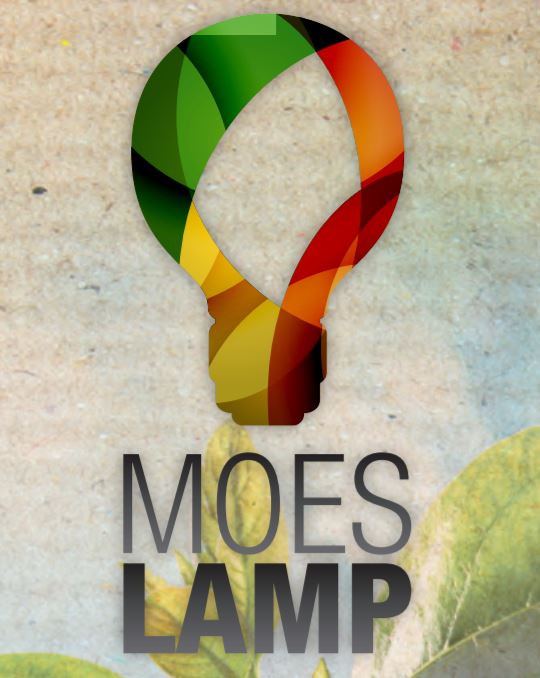LED lighting
25 questions about LED lighting
Over the years we received many questions about LED lighting. Of course we have an answer to everything, so do you have any questions that are missing here? Let us know.
1. What is an LED?
LED stands for Light Emitting Diode. An LED is a component that converts electricity into light through 2 different semiconductors. Due to the transition from electrons from one semiconductor to the other, energy is released that they have to lose. That is why they broadcast light. An LED is, as it were, a chip. They are also produced in the same way as microchips for telephones and computers.
2. When was LED invented?
The first LED was invented in 1927 by Oleg Losev. At the time, it was not yet usable for commercial purposes, but it soon became clear that LED was a possible new future light source. Due to further development, the cost price only fell in the 1960s. The Blue LED was invented in 1994 by the Japanese Shuji Nakamura, shortly thereafter the white LED was also invented.
3. Why is an LED driver needed?
The diode itself cannot function on a normal power grid, the power supply is not constant enough for that and the LED will blink. The driver provides an electronic circuit, making it a constant power supply.
4. Why does LED last longer than normal light sources?
LED is a chip and is accurately punched by machines. This process is optimized, always the same and virtually flawless. That is why the quality of the LED is constant and consistent. More oxygen is present when assembling normal lighting. As a result, the aging process takes effect faster and the light quality diminishes. That problem is not present at LED, the light quality is retained up to 50,000 burning.
5. What is the difference between the installation of LED or normal lighting?
LED consumes less energy, so there is also less power to be moved to the LED fixture/lamp. That is why you can work with thinner cables and also fewer cables, that saves not only in the investment but also in the amount of work. That makes LED interesting for both new construction and existing construction.
6. Why does an LED use less power?
Due to the collaboration of 2 semiconductors, LEDs need less energy to produce light. The electrons switch between 2 semiconductors, 80% of this energy is converted into light. A large part of the energy is therefore retained, so LEDs can work with a lower energy state.
7. What should I pay attention to when purchasing an LED lamp?
When purchasing LED lighting and choosing the right LED lamp, there are a number of things that you can pay attention to.
- Lumen (light intensity)
- Kelvin (light color)
- Wattage
- Type fitting
- Quality
8. What are the benefits of an LED lamp?
- low energy consumption, so cheap to use;
- very long service life (up to 50,000 burning hours);
- shock resistant;
- No warm -up time, so immediately maximum light intensity;
- contains no harmful substances.
9. What are the disadvantages of an LED lamp?
- Not all LED lamps are dimmable, if they are dimmable, sometimes it requires a separate driver, transformer or dimmer for it
- higher purchase price;
- Large variations in quality of lifetime, color reproduction and light distribution;
- Limited to unsuitable for closed lamp holders and spots.
10. Can I just throw a broken LED lamp away?
LED lamps contain electronics and must therefore be returned to small chemical waste. You can also hand in your used LED lamp in the store where you buy a new one or in a Wecycle container in the supermarket.
11. Why does an LED start immediately?
Especially larger conventional lighting fixtures (think of sports field lighting for example) have to heat up.
12. How do I know what color light the lamp has?
The light color is expressed in Kelvin (K). Warm light is the standard white/yellow halogen lamp and is expressed in 3000K. Extra warm is the yellow/orange color of a light bulb: 2700k. We have one for that Handy image made for you.
13. Do I also have to replace the fixture of my lamp?
Most LED lamps are retrofit, that is, that they fit into every standard fitting or fixture. In most cases, the fixture does not have to be replaced. Do you want to know for sure? Take a good look at the dimensions or inquire.
14. What makes LED different from normal lighting?
You can switch LEDs on and off as often as needed, without this having a negative effect on the lifespan of the fixture or the quality of the lighting. A light bulb uses burning so that light is created, the constant switching on and off of a light bulb has a negative impact on the lifespan. LED is also much more flexible than regular lighting, which makes it possible to connect the lighting to intelligent lighting control systems. These systems can contribute to achieving extra savings.
15. How quickly is the investment in LED lamps recovered?
It takes an average of two years before you have the investment in LED lamps out. However, this depends on the difference in wattage with the old lamp and the number of burning hours per day.
16. LED is getting cheaper, why shouldn't I wait to invest?
Just like with televisions and computers, newer models and technology will come on the market. LED is under development and it will stay that way in the coming years. The energy saving is something that is already a fact at the moment. That is why it is a shame to wait, because you can start saving energy from today.
17. How does the dimming of LED work?
Dimming brings atmosphere. Whether an LED lamp can be dimmed depends on the type of lamp and the electronics in it. Not all LED lamps can be dim, it depends on the type of driver present in the lamp. In most cases it is dimmable with the products or a lamp or not. The electronics in an LED lamp or LED spot works differently than a halogen lamp or light bulb. The dimmer must be suitable for this.
18. How many spots can be on one dimmer?
The power of the dimmer determines the number of LED lamps to be dimmed. 10% of the maximum power of the dimmer can be used for dimming. An example: your dimmer has a capacity of 150 watts, 10% of which is 15 watts. So you can dimming 1.2 or up to 3 lamps of 5 Watt via this dimmer. It will therefore have to be considered per dimmer what the possibilities are.
19. My LED lamps blink, how is that possible?
Dimmable LED lamps do not always work in combination with an old -fashioned dimmer. When connecting an LED lamp to a "normal" dimmer, the lamp can blink, buzz or vibrate. The lamp can even break. It is also possible that too much wattage is used for what the dimmer can handle. In that case, use a lower or higher wattage LED dimmer.
20. Why is LED lighting more expensive?
We already indicated that an LED lamp is a piece of electronics, you simply pay a little more for that. The lifespan can not be compared with current lighting and the quality over the term is also better retained.
21. What does LED light differ from light from normal lamps?
Light from LEDs is easy to check, it is possible to produce different light colors. This way you can purchase whiter light that corresponds to that of daylight. LED light therefore has more contrast that contributes to a faster detection of movements and depth. The color retention is also much better with LED luminaires than with conventional spotlights. The amount of Kelvin from a lamp will not fall.
22. Which LED lamp replaces my light bulb?
For the old light bulb, the light quantity was often expressed in Watt. For example, you provided 25 watts in your table lamp and 60 watts above the dining table. But Watt is an expression of electrical capacity, not of light. That is why we now use 'Lumen' to compare the light output of different (LED) light sources. Below you can see how that relates.
23. Do I have to replace my transformer when replacing 12V lighting with LED?
A halogen traffic often has a minimal wattage that a few LED lamps do not meet. If this is the case, you can use an LED transformer with a layer of minimal wattage. Need transformer? This is only necessary when connecting 12V or 24V lamps to the regular power grid. You don't need a transformer with the 230V lamps.
24. Do I need a 12V MR16 spot or a 230V GU10 spot?
In most cases both can. Due to the humidity, 12V MR16 spots are usually used in bathrooms and kitchens, for example. Usually 230V GU10 spot is preferred because they are more effective and because no transformer is needed what is the case with 12V.
25. Which fittings are all for LED?
LED Fitting Kiezen? If you want to replace an old or broken lamp for an LED lamp, first take a good look at what kind of fitting you need. LED lamps can be used in existing fixtures because they have the same fittings as incandescent lamps. A number of different LED fittings can be distinguished. For example, we know the LED fittings: E14, E27, GU10, GX5.3, GU5.3, GU4, G4, GX53 and GU9.
- If you choose a selection, the page will be completely renewed.
!























